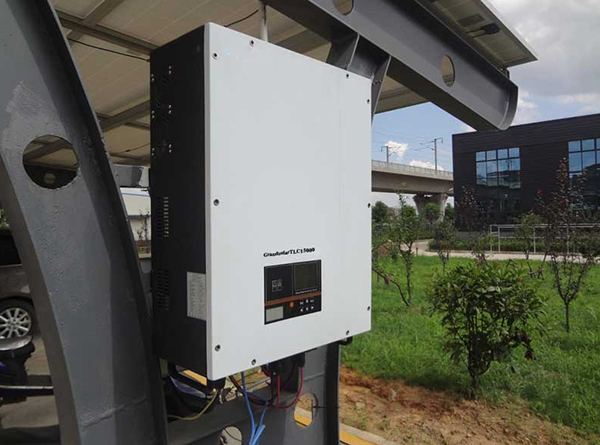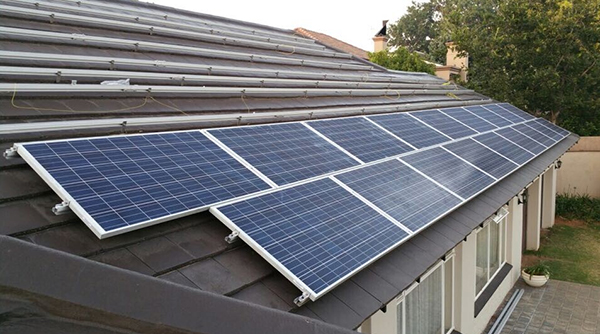When installing solar photo-voltaic (pv) system on the roof of your new home, you need to be careful about shading.
There are a multiple of inquiries we have to get answers for from our electricity retailer when we intend to install a new solar photo voltaic system. In general, our solar installation company will know the answers of these inquires, but better to ask the retailer, and here are some of these inquires.
Solar inverter is a main device and important part of PV on grid power system. In order to ensure the normal operation of the solar PV grid tie system, the correct configuration and selection of solar inverters are particularly important. For the configuration of the solar inverter, in addition to considering the technical specifications of the entire photovoltaic power generation system and referring to the product manual, the following technical features should also be considered: rated output power, output voltage adjustability, overall efficiency and start-up performance.
The solar inverter is the safety control center of PV system. Thus, during the PV system operation, the inverter condition, including the temperature and operation of interval cavity and main element, the bus voltage and the communication among chips, shall be inspected from time to time. In addition, the insulation among components and DC system, the DC voltage and current, the AC output voltage, current and frequency shall also be inspected. In case of any failure, it shall be solved in time.

Solar inverter is an electronic product and its service life is limited due to the limit of the components. However, many inverters are damaged before the service life expires and the actual service life is shorter than the designed theoretical service life. The service life is determined by the product quality and the post-period installation, operation and maintenance conditions. So, how to improve the service life of the solar inverter?
Solar inverter shall realize the highest efficiency in wide power range conditions. Meanwhile, using a solar inverter shall meet the strict safety requirements. The property of the solar inverter is essentially determined by the accurate measurement of basic electricity. The safety criteria that shall be followed by solar inverter designers may become stricter and stricter. For instance, just like the limit on the input of DC power into the grid, some consensus may be reached on the allowable total harmonic wave of the solar inverter output current. By far, many different local limitations are put forward based on the layout situation. Thus, it requires that when the power grid frequency is greatly higher than 50Hz or 60Hz, the current shall be measured accurately.
The inverter plays an important role in the photovoltaic grid-connected system design. It can convert the solar energy into DC energy and then invert it to the single-phase AC energy that can be applied by various devices.
The micro inverter technology means the technology of directly connecting inverter with single PV module. Each PV module can be equipped with an inverter that can realize AC-DC conversion and can track the maximum power point. It can directly convert the power generated by PV module into the AC energy so that it can realize AC load purpose or it can be transmitted to the power grid.
In the solar PV grid tie system, the power of photovoltaic module is related to the inverter. The power matching between PV modules and solar grid tie inverters is not in a relationship of 1:1 fixed ratio, so it needs to be considered comprehensively based on the specific conditions of the project. The main influencing factors include irradiance, system loss, component installation angle, efficiency and life span of the on grid inverter, etc.
As to the optimization of the efficiency and reliability for solar photovoltaic system, a rather new means is to use the micro inverter, which shall be connected to each solar panel. Equipping a separate micro inverter for each solar panel can make the system adapt to changing loads and weather conditions, thereby providing the best conversion efficiency for a single panel and the entire system. The micro-inverter architecture can also simplify wiring, which means lower installation costs. By making consumer solar power systems more efficient, the time required for the system to get back the initial investment in solar technology will be reduced.
As the energy constraint becomes increasingly evident, the solar PV power generation system attracts growing attention. The direct current generated by solar cells and wind-powered generators should be inverted by inverters before being combined to the grid. Therefore, the design of solar on grid inverters determines whether the solar PV system will operate reasonably, efficiently, and economically. The control circuit, signal gathering circuit, and the switching tube drive circuit of solar on grid inverters need different adaptive power supplies. Thus an independent power supply should be provided for powering these circuits. The voltages of the designed auxiliary power supplies include +15V, -15V, and +5V. A single-ended flyback DC/DC topographical structure is adopted, with stable and reliable operation.
The AC voltage overrange is the most common failure of the solar inverter connected with the PV grid system. This is because the grid voltage is not constant and it will change with the changing of the load and current. At the same time, the output voltage of the inverter will be affected by the grid voltage. When the grid encounters abnormal situation, the inverter power supply shall be stopped to avoid more serious damage on the grid.
As a critical component of the entire solar PV power generation system, the solar inverter is a power electronic circuit that converts the direct current emitted by the solar array into the alternating current to power the AC load. The solar inverter has two primary functions: Firstly, to provide electricity for the AC load to complete the DC/AC conversion. Secondly, to find the optimal workplace to optimize the solar PV system's efficiency. The solar PV system works with an optimal voltage and current at specific solar radiation, temperature, and the solar cell to generate electricity at the maximum power. Therefore, when selecting a solar inverter for PV power generation system, it should meet the following 6 features: reasonable circuit structure, a wide range of DC input voltag, high efficiency, high reliability, pure sine wave and high overload capacity.
With advances in solar photovoltaic technology, many technical terms, in addition to solar power generation systems, PV sunshine rooms, PV greenhouses, and other civilian projects, have taken a deep root in residents' life. For instance, many purchasers ask questions when buying an inverter, for example, how many circuits of MPPT does this inverter has? What the power-generation efficiency is like? Although many people are aware of the MPPT function, they are unclear about the circuit's working principles. This paper will briefly introduce the DC-DC conversion circuit, a vital component of MPPT.
If in the PV system, the component installation place is distant from the power grid connection place and the distance is over 300m, the solar inverter can be installed at three places. The first place is the place that is most approximate to the grid connection point, which can save the AC cable. The second one is the place that is closest to the component, which can save the DC cable. The third one is the middle place. Which one is the best choice?

Over the past few decades, solar technology has evolved rapidly, emerging as a reliable, eco-friendly, and economically viable energy choice. For residential users, installing a solar energy system not only reduces electricity costs but also increases property value and lowers the household’s environmental footprint. In today’s blog, Home Power Inverter will delve into the numerous benefits that solar energy brings to households and analyze its positive impact on the economy, the environment, and lifestyles. This article will provide a detailed explanation of how solar energy systems work and outline seven key benefits, offering readers a comprehensive understanding of the remarkable value solar power can provide for homes.
Generally, the solar photovoltaic system with its different types (Grid Tie, Off Grid, and Hybrid) deal with risky voltages values, its alive electricity with voltages that can hurt and cause die to human in case of direct contact. Also, there are some technical areas that needs solar professionals to deal with, like the issues related to wind loading and how the solar system can withstand this safely, how to make voltage compatibility between solar panels configurations, and how to do installation and commission for the solar inverter. One more important thing is that in order to get solar rebates for the residential solar system from your government, your solar system must be installed by professional, licensed and accredited solar system installers.
Usually the main reason of installing the solar photovoltaic system is to produce electricity to be used in different applications. Some people lives in remote locations which are not serviced by the main electric grid, and using solar photovoltaic system for those people is a very reliable and cost effective way of electricity generation, it’s very less expensive than making extensions (installing poles and cables) to get electricity from the nearest main grid power supply.
Silicon solar cell, framing, glass, connectors and diodes types and quality. Also, other components which share to make the final solar panel. Of course there will be cheaper option and expensive option, and logically the expensive option is referring to the high quality and longer life. These differences will be fully noted, and recognized after 10 or 15 years of solar system operation date.
Solar system installation costs. It will be extra required costs for complicated roofs for example or how connections will be securely done and what will be the costs of system balance like fuse or isolators.
The inverter is the heart of the solar photovoltaic system, and more than 90% of solar system failures causes is due to inverter malfunction. There are 2 main factors affecting solar inverter selecting; inverter performance and its price.
If your building/house is heavily shaded. As the shadow will dramatically reduce the solar system generated output electricity. In your vision you have to take care and consider about the impact of the current shadow and the anticipated shadow comes from trees grow or known renovations and extensions in surrounding buildings, that what we called shadow analysis study. It is an important study assisting us deciding whether the solar system will be a good beneficial investment project that worth to proceed or not. One more thing to note, is that in case of locations subjected to such shadow, its recommended to use micro solar inverter, so you can distribute your solar panels freely and avoid areas with heavy shadow.


